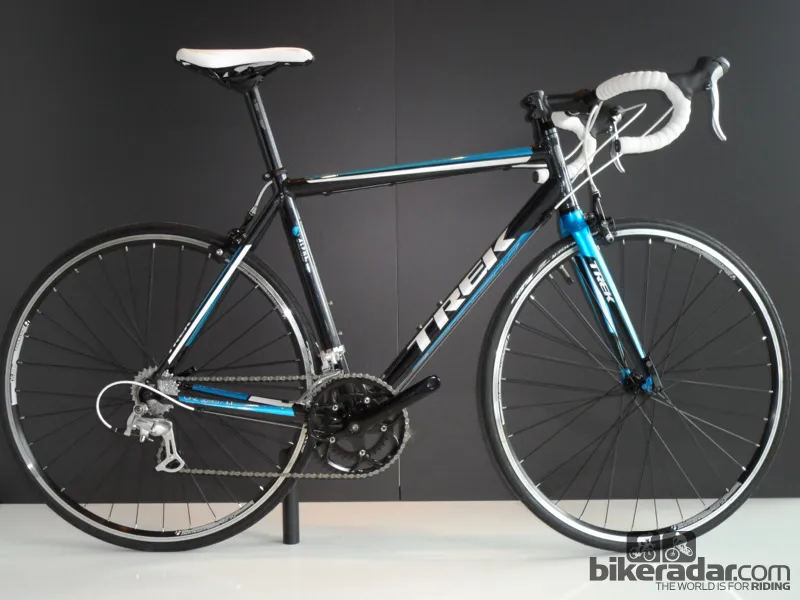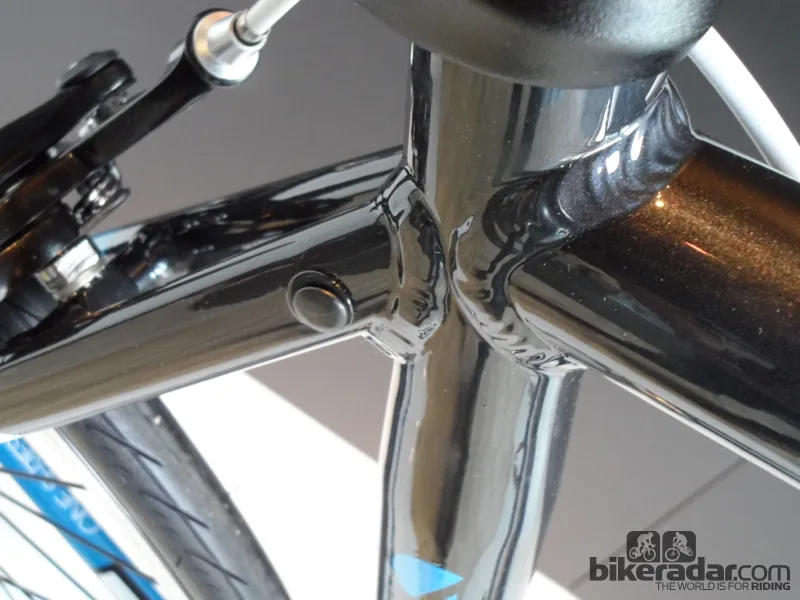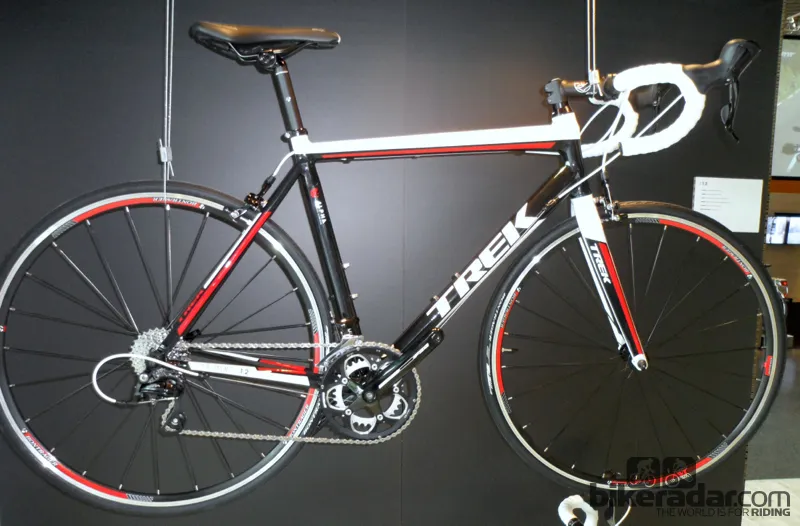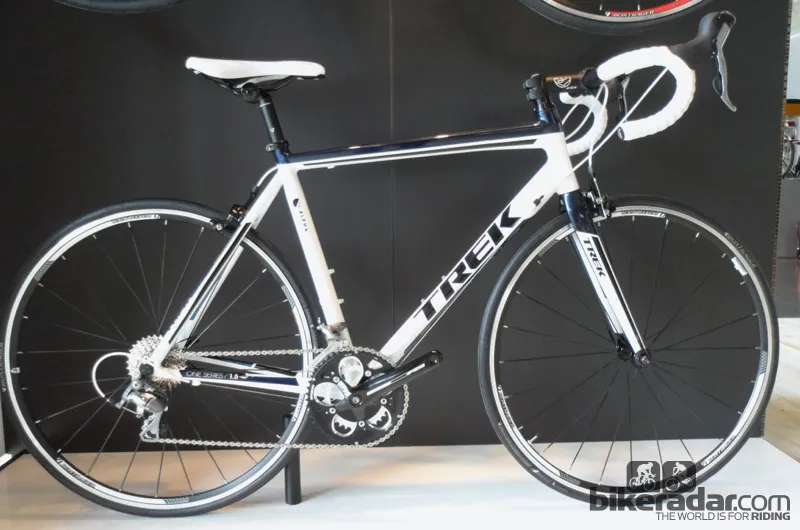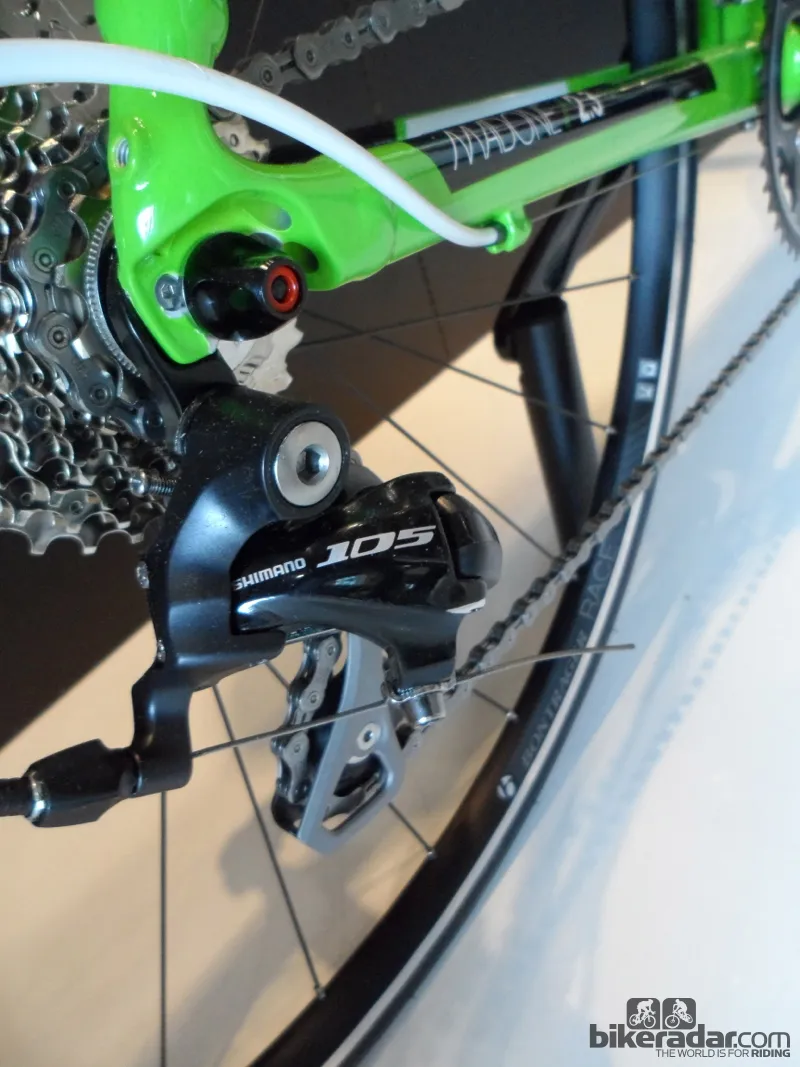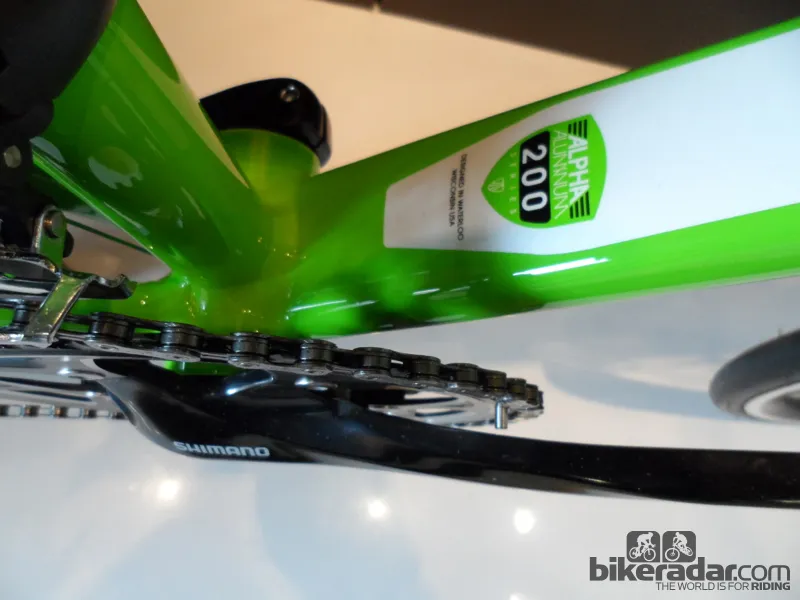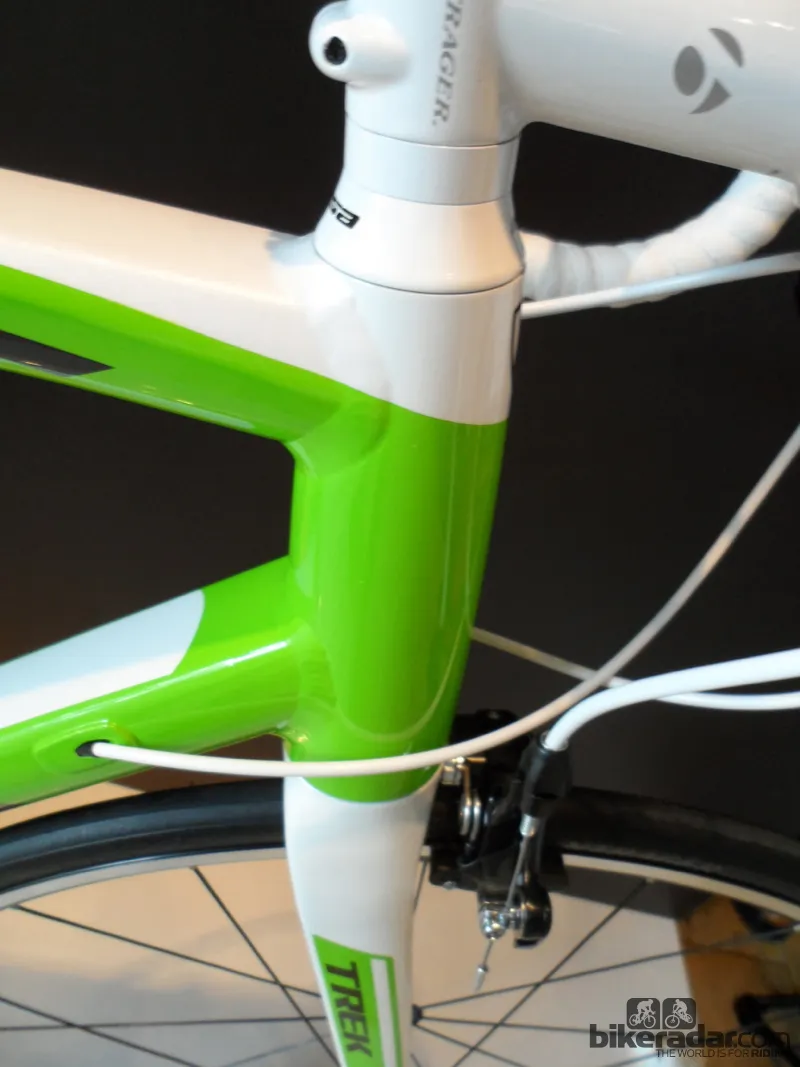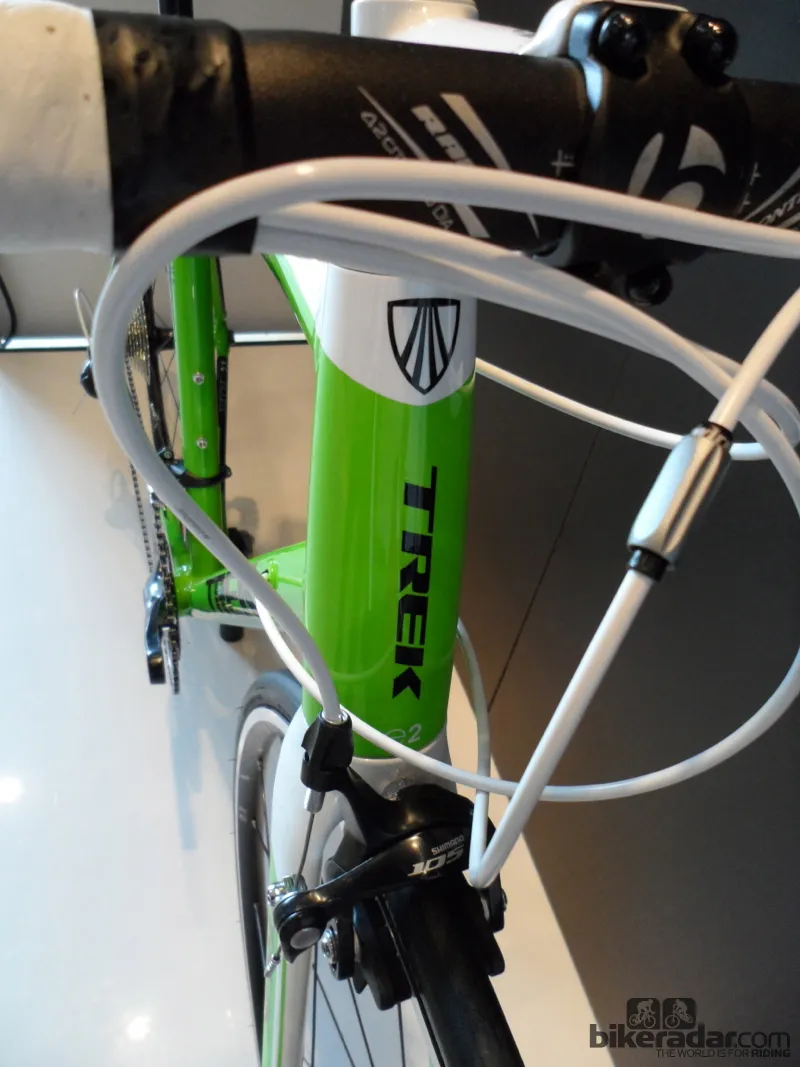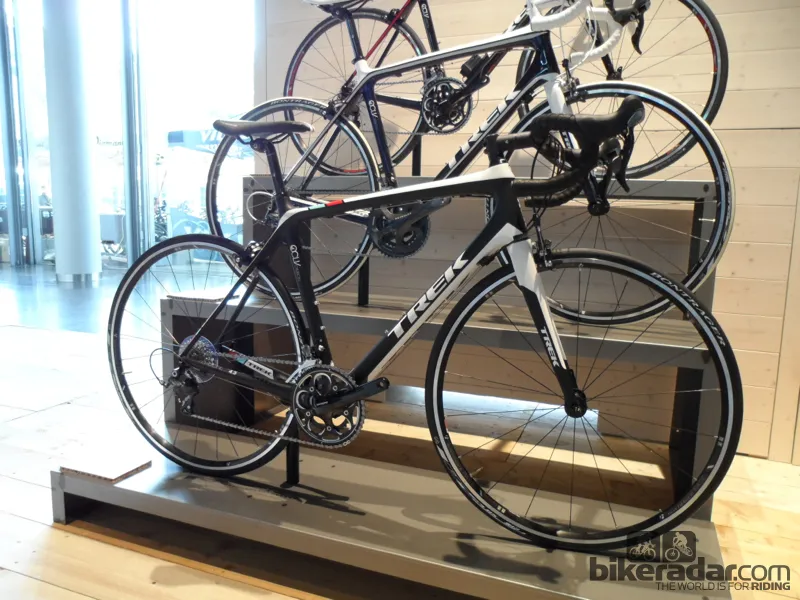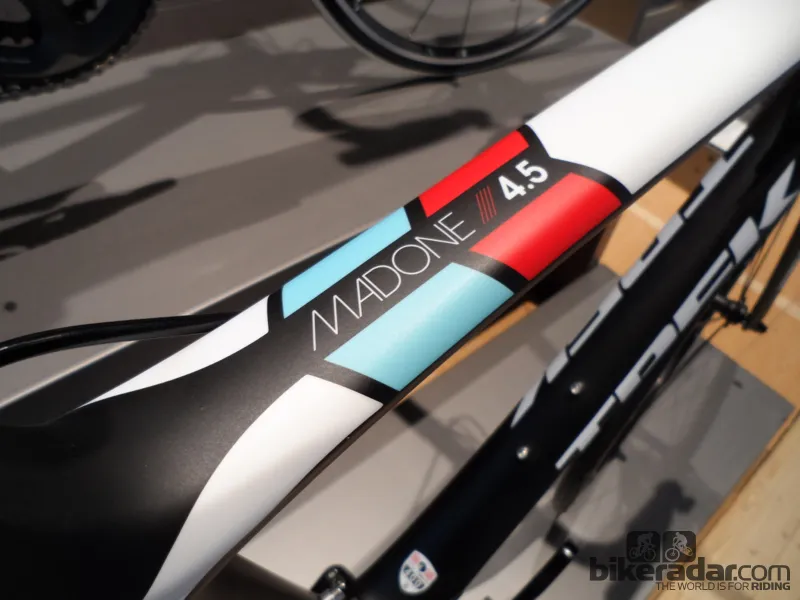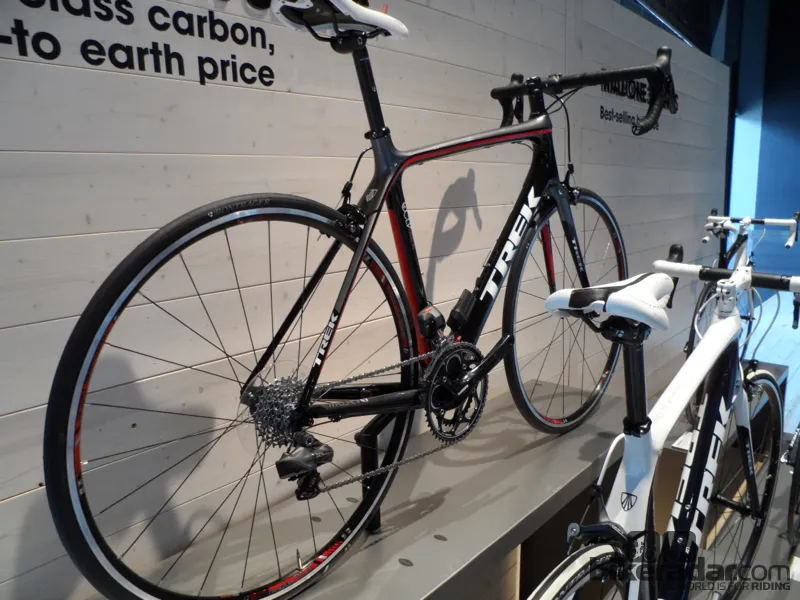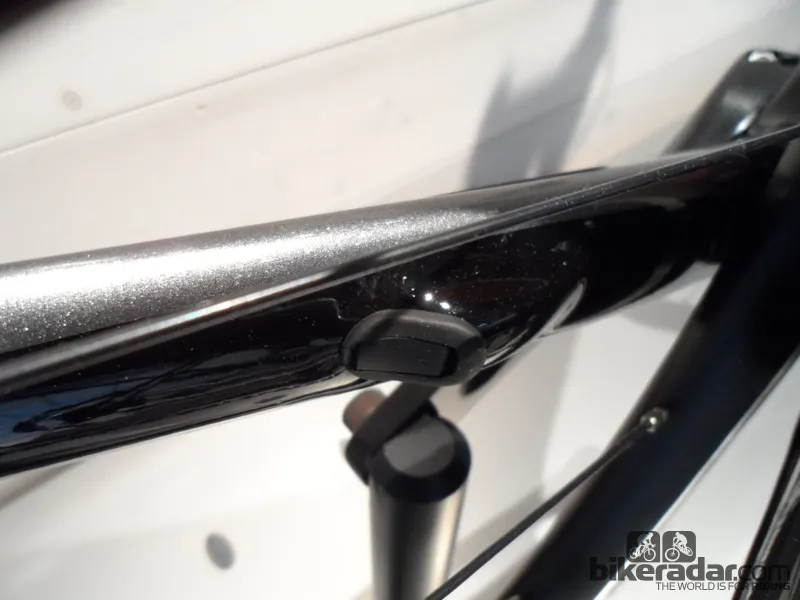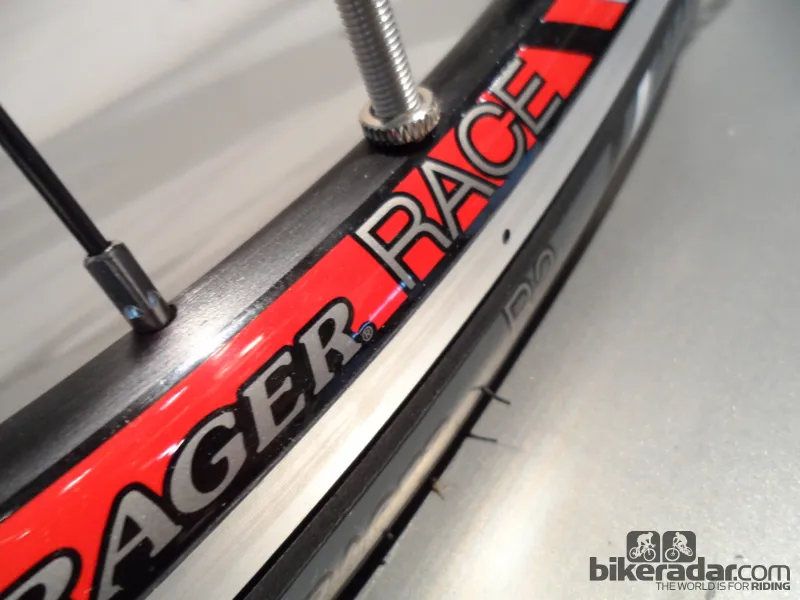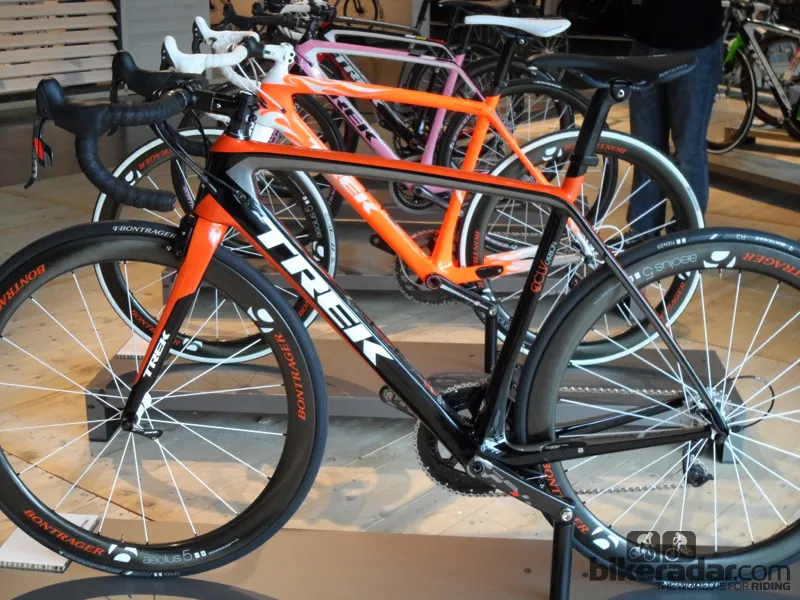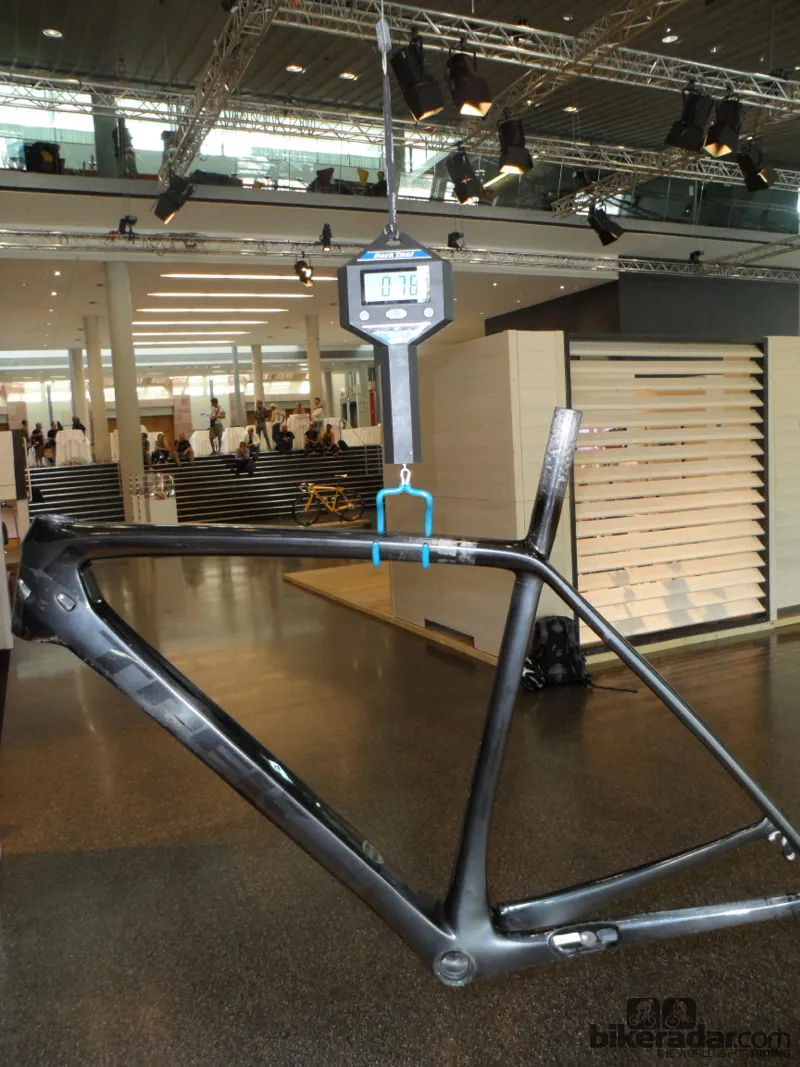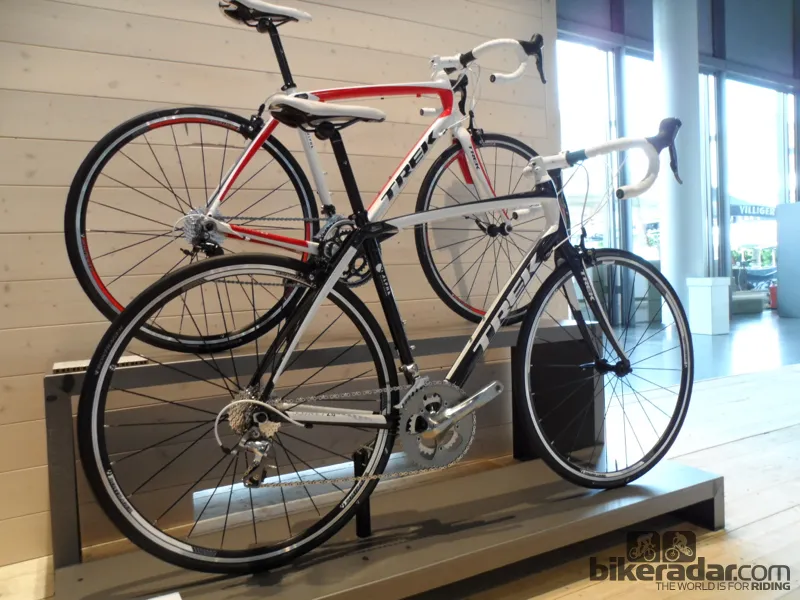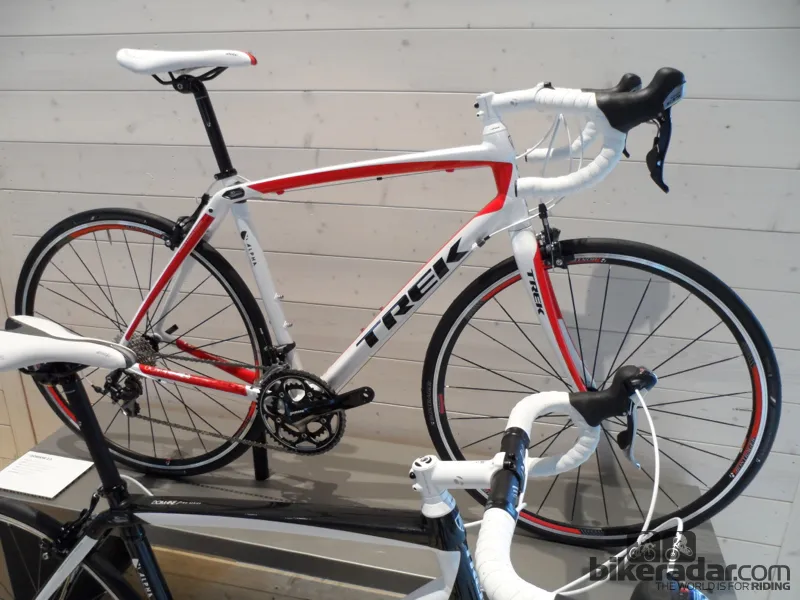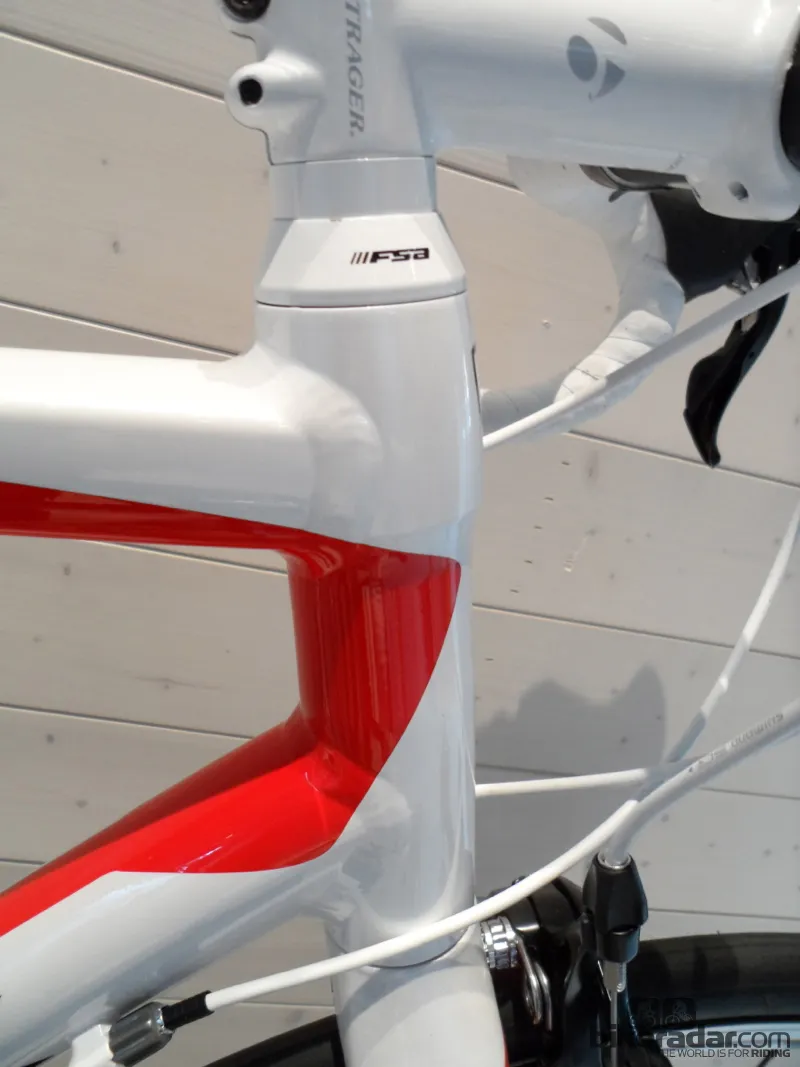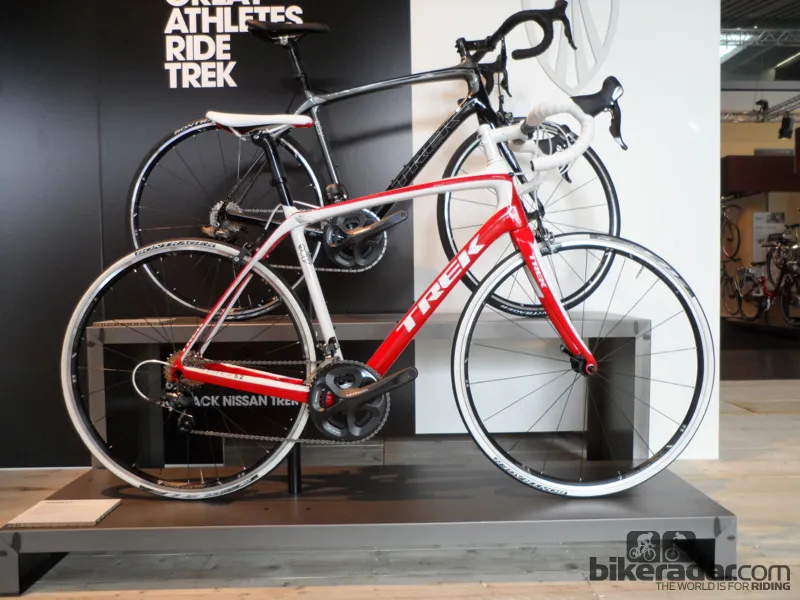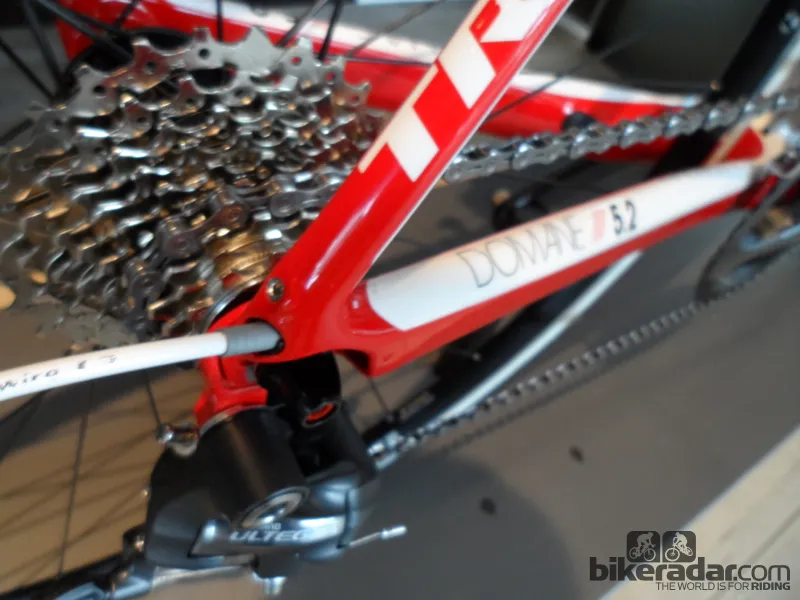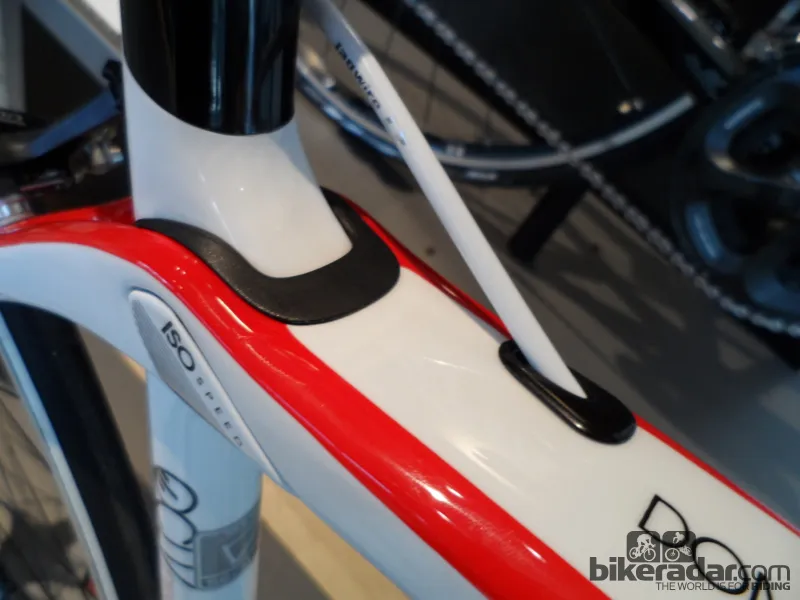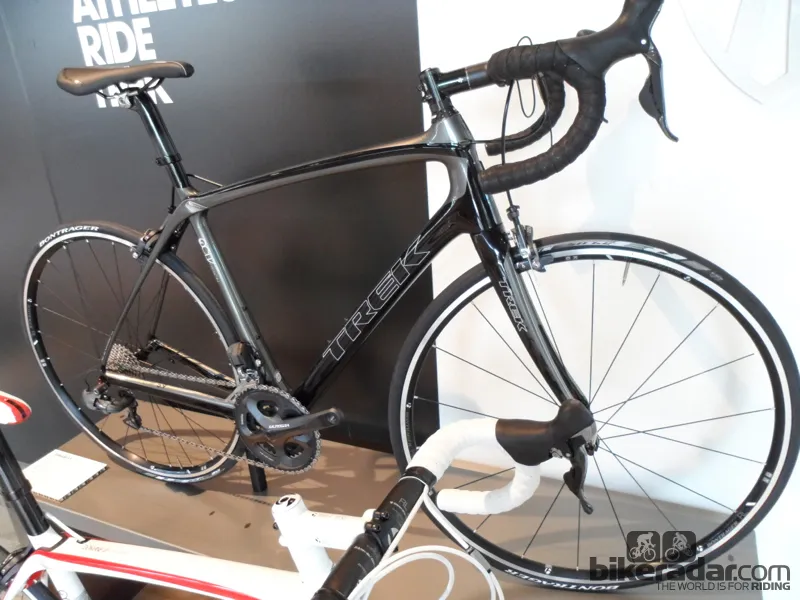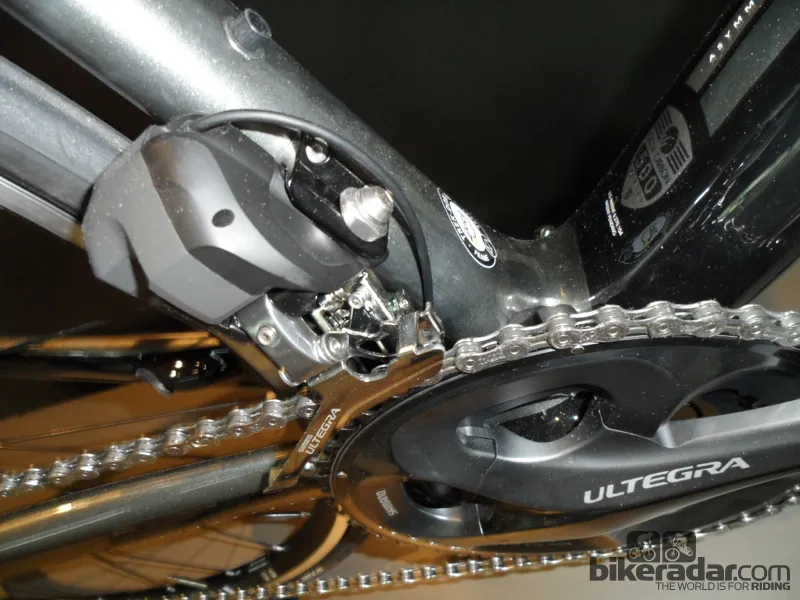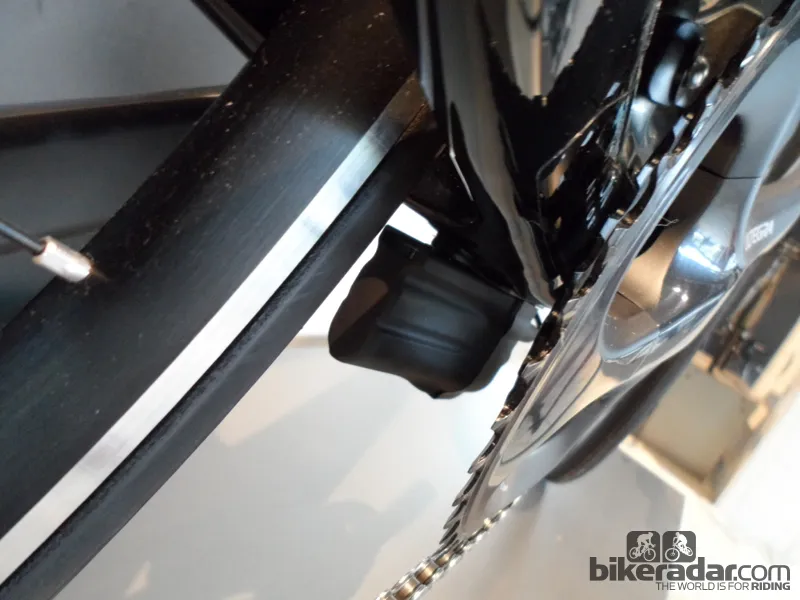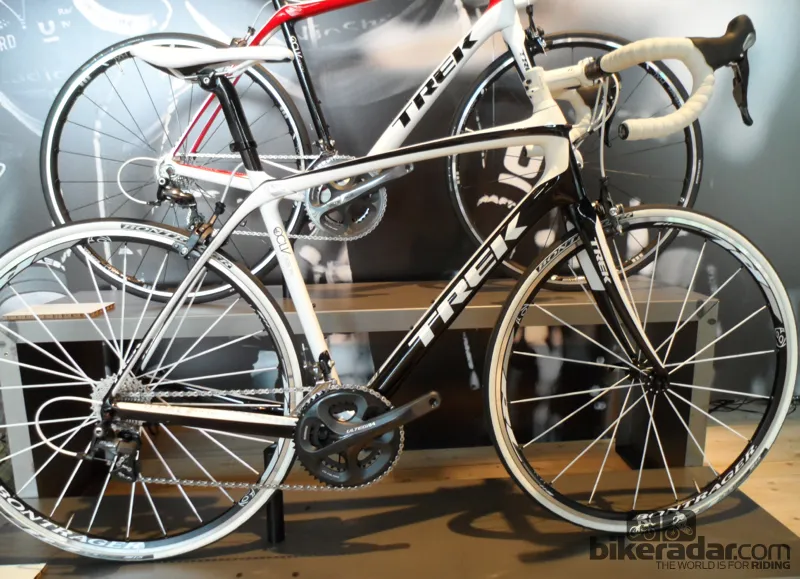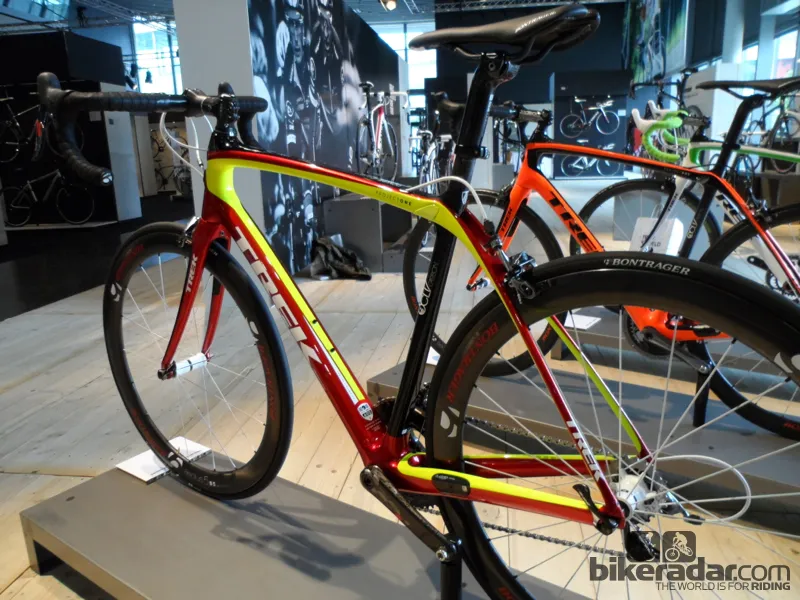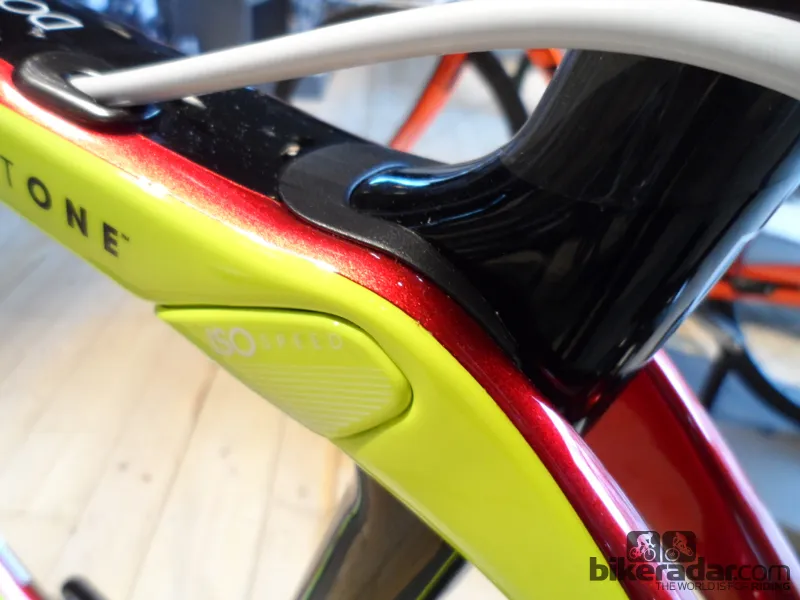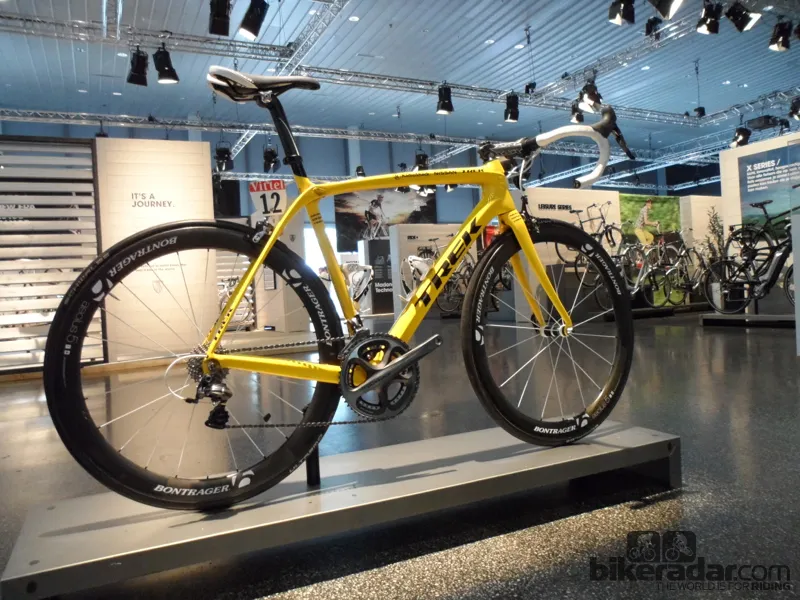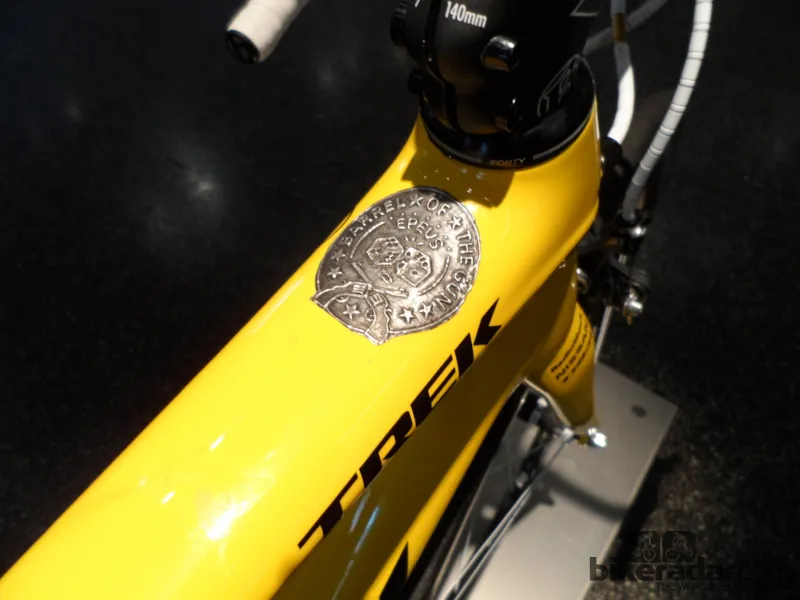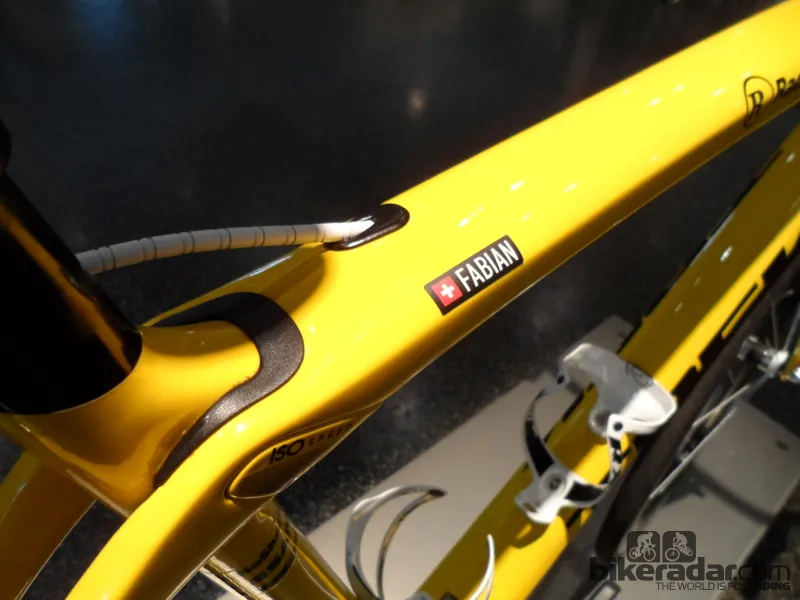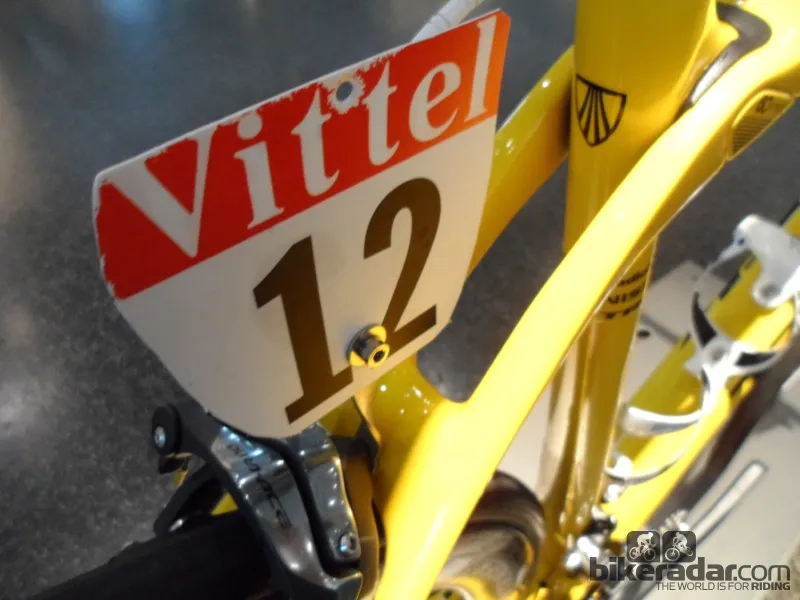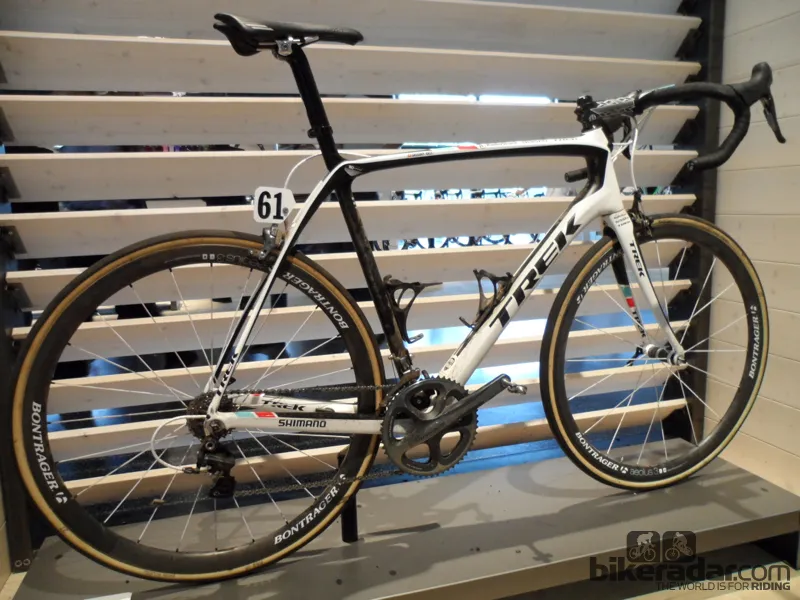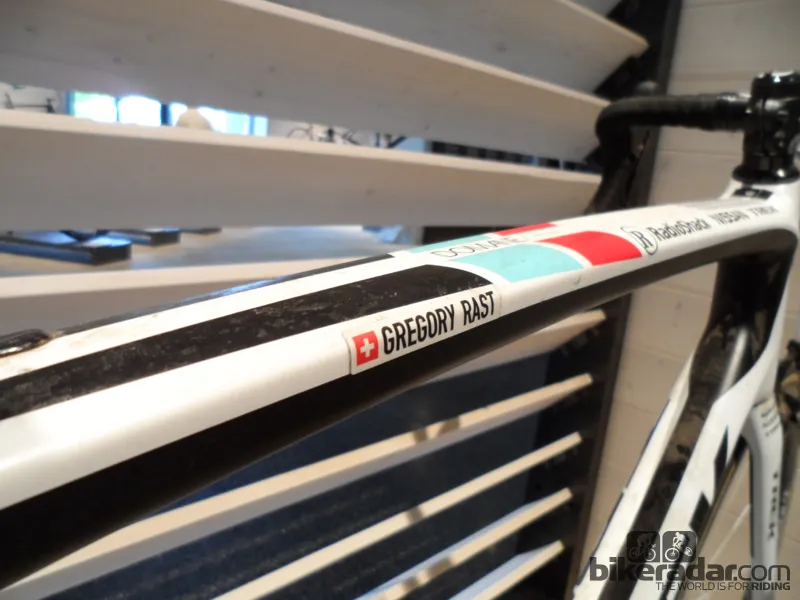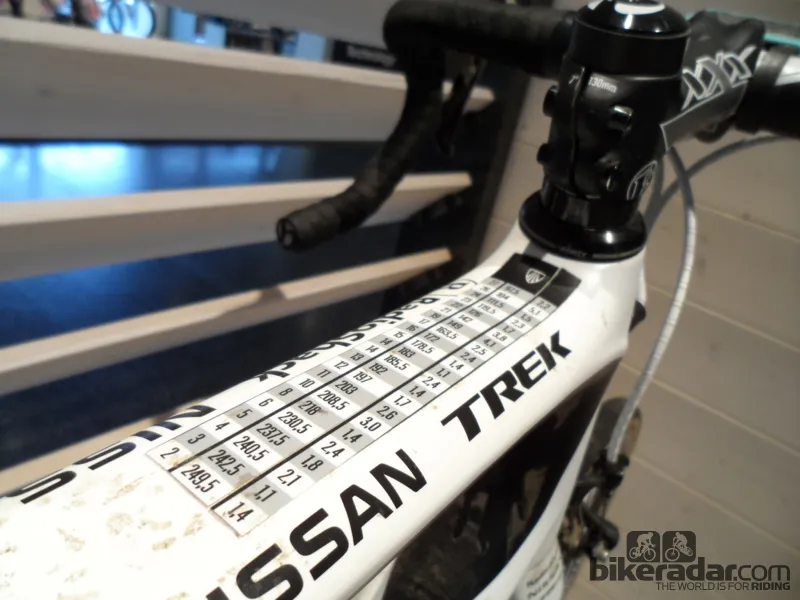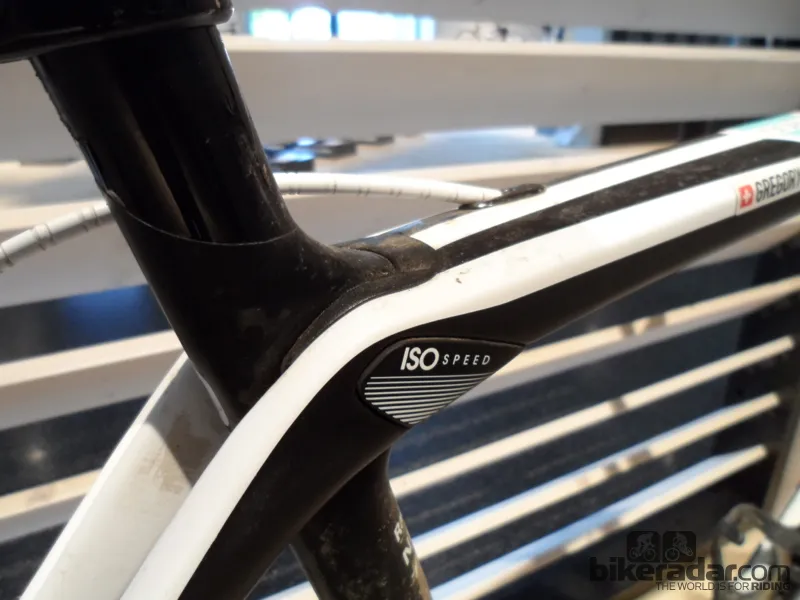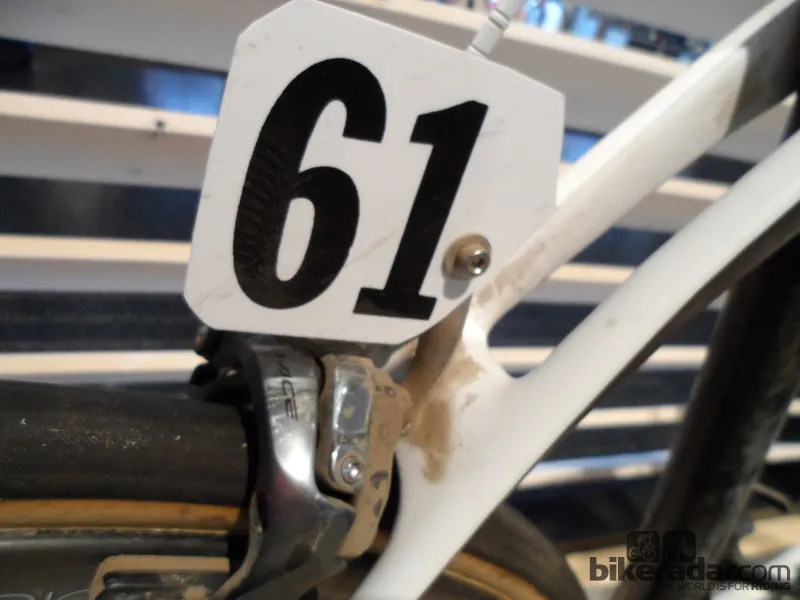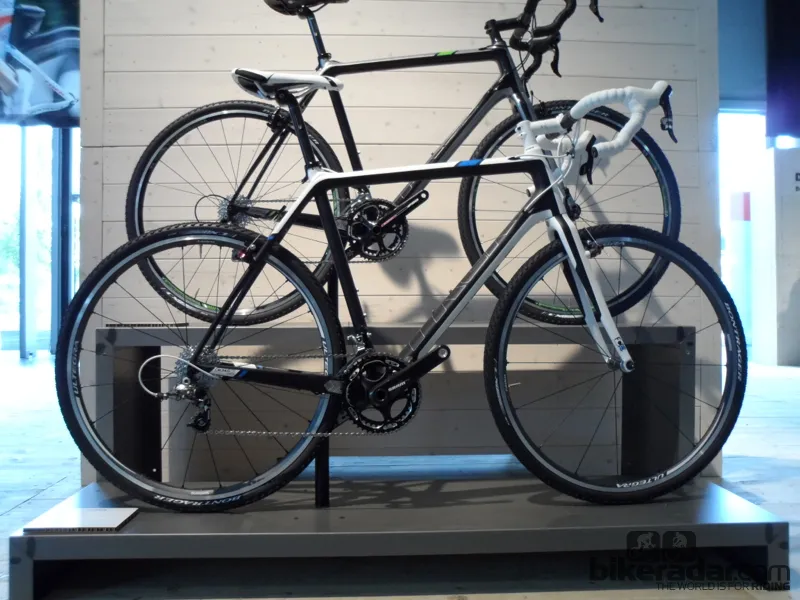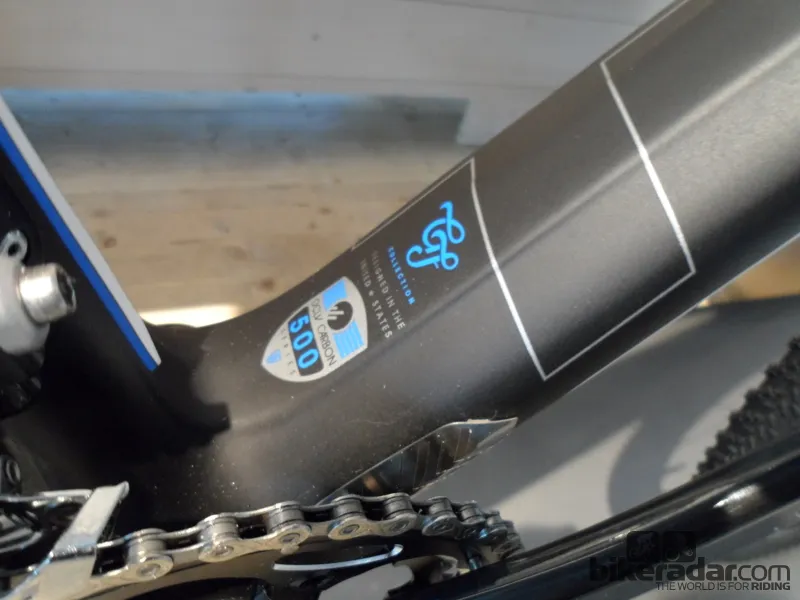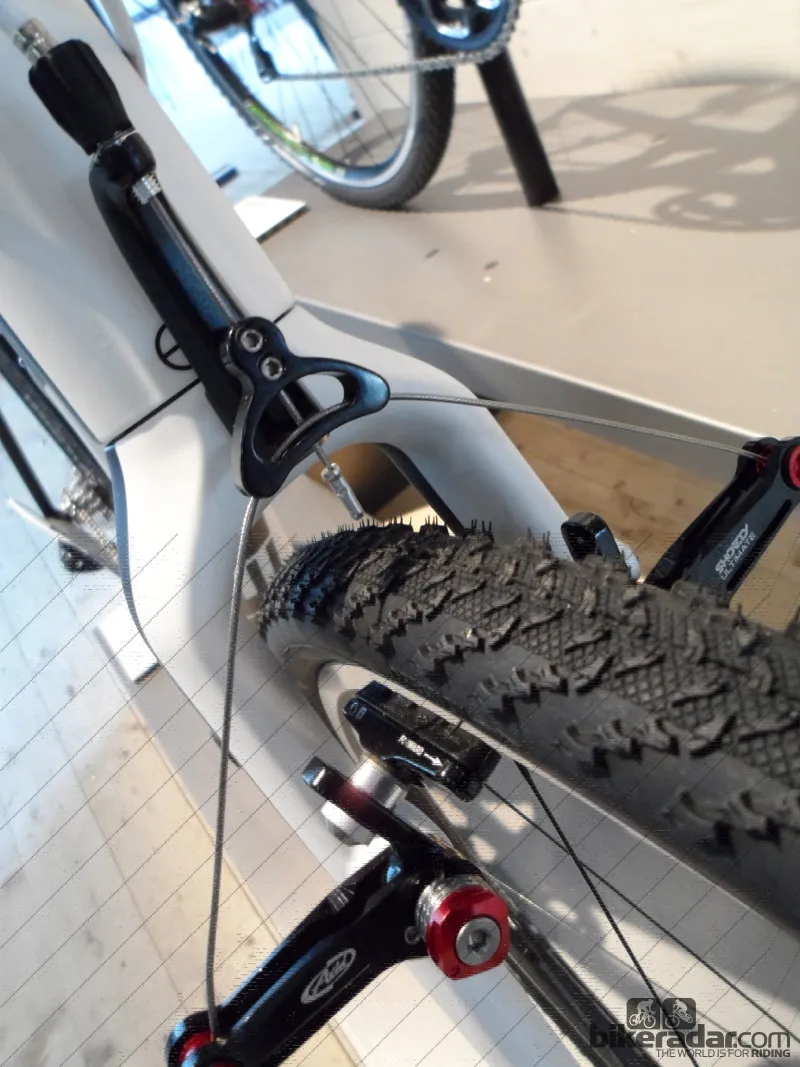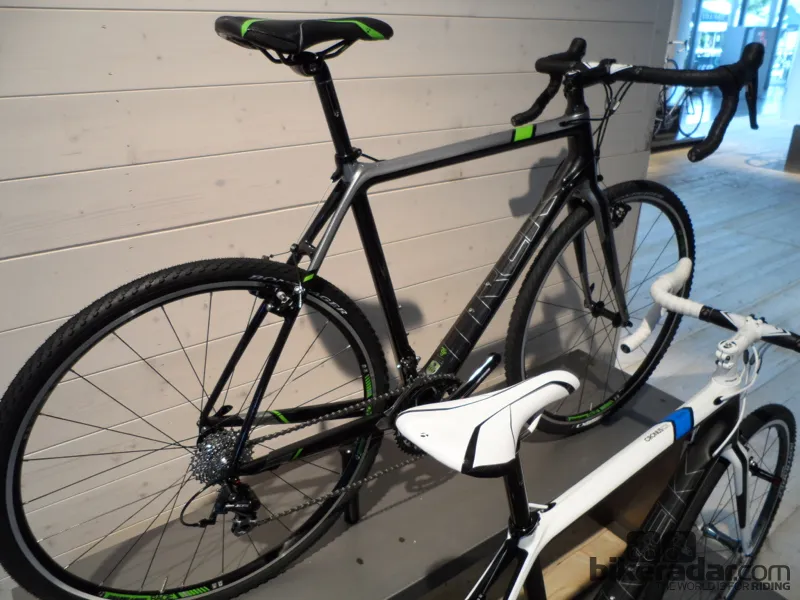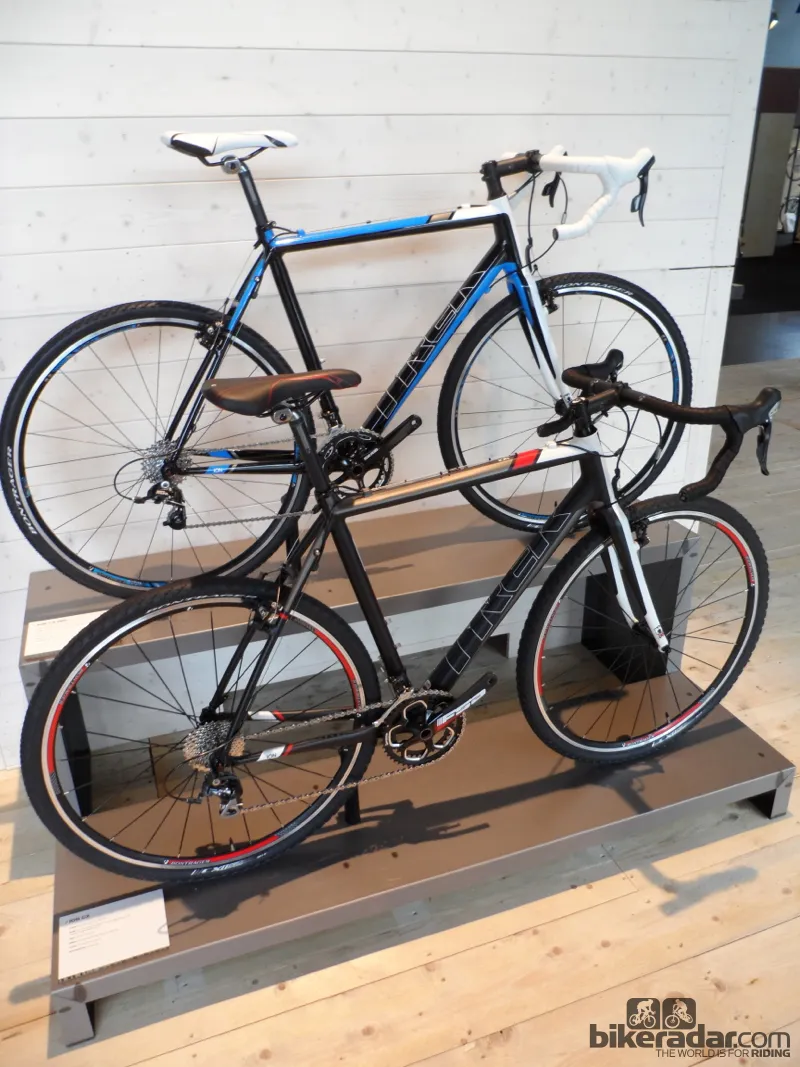Trek recently launched the new Domane and new Madone, but both of those debuts concentrated on the range-topping halo versions. At Trek World in Frankfurt, Germany, we took a look at Trek’s full range of new road models.
Trek 1.1
The base model of Trek’s range now features the same H2 fit — the ‘everyman geometry’ — as available on all of Trek’s higher end road machines. The base model price of £550/$859 has an 8-speed drivetrain from Shimano’s basic but usable 2300 group with finishing kit and wheels from Bontrager.
Trek 1.2 and 1.5
Trek’s entry-level aluminium 1 series gets a new 100 series aluminium frame for 2013, shedding a little weight over last year’s model, and now uses the same H2 geometry found throughout Trek’s range. The 1.2 gains some spec upgrades. Out back Shimano now provide the latest Sora rear mech, the seatpost is upgraded to a Bontrager Race aluminum post, and up front a new Carbon fork is fitted. The 1.2 will retail for £700/$1,090 and in compact 50/34 and triple 50/39/30 options. The 1.5 shares the frame platform but for the extra £150/$235 it gains a Shimano Tiagra 10-speed drivetrain in compact and triple options. Both bikes are compatible with mudguards and a rear rack, making them decent options for commuters or winter trainers.
Trek Madone 2.3
Coming in at a competitive £1,150/$1,795, the 200 series Aluminium Madone incorporates the KVF Kamm tail design of the new flagship carbon race bike and the new E2 head tube with its larger 1.5in bottom race. Driving the bike is a compact equipped Shimano 105 groupset. Like its carbon bigger brothers, the aluminium frame features hidden mudguard mounts and significant upgrades over the previous 2 series Madones, includes a tubeless-ready wheelset and carbon seatpost.
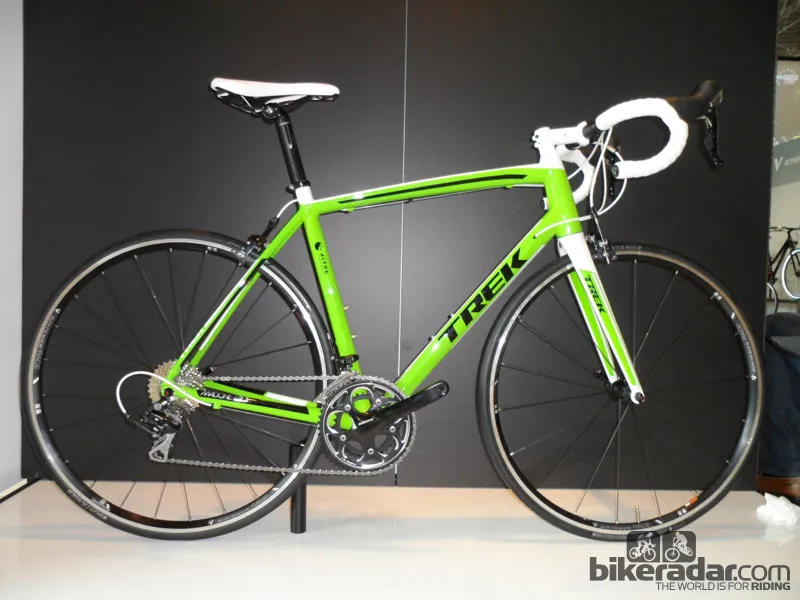
The aluminium 2.3 frame gets a complete revamp with the aero KVF design found on the top of the range Madone 7
Trek Madone 4.5 and 4.9
The 4 series frame gained a better grade of carbon and a new BB90 bottom bracket to lower frame weight down to 1,100g (for the 4.5 at £2,000/$3,123 that’s pretty impressive). Other significant upgrades include a tubeless-ready wheelset and a carbon post for the 4.5.
If Di2 is what you’re looking for in your next bike, the Madone 4.9 at £2,600/$4,060 looks like a great option. The bike still features tubeless-ready wheels and a carbon post. The only downgrades to hit the competitive price point are the non-Shimano brakes and a non-series Shimano R565 crankset.
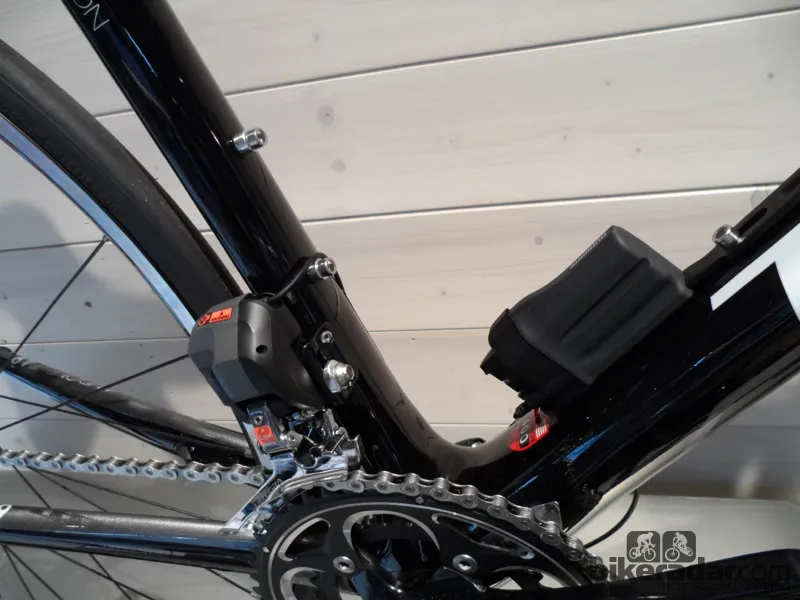
The 4.9 now comes with Ultegra Di2 for £2600/$4,060
Trek Madone 5.2
The KVF aero design as found on Trek’s pro-level bikes has been rolled out on the new 5 series models too. Built with Treks 500 series OCLV carbon, it’s heavier than the top-flight machines, but brings the aero-tech to a much more affordable price point.
It retains all of the design features such as internal cable routing, DuoTrap compatibility (for Ant speed and cadence sensors), and the carbon seat mast cap. The complete bike features an Ultegra drivetrain with an compact chainset, Bontrager’s Speed Limit integrated brakes and Bontrager’s Race tubeless-ready wheels. The 5.2 is also available in a WSD (women’s specific version) and retails at £3,000/$4,685.
Domane 6.2 and 6.9
The Domane with its unique rear decoupler design has already proven itself under Fabian Cancellara. To get a standard bike close to his, you’ll need to look at the range-topping 6.9 with an 11-speed Dura-Ace drivetrain, Bontrager’s lightweight Race X Lite tubeless wheelset, and a Bontrager cockpit that includes the new carbon IsoZonebar. An equivalent WSD model is also available. Pricing will vary depending on final finish as the 6 series Domane’s fall under the Project One custom banner.
The 6.2 shares the same frame, but comes with an Ultegra drivetrain, the aluminium version of the IsoZone bar and Race Lite tubeless wheels.
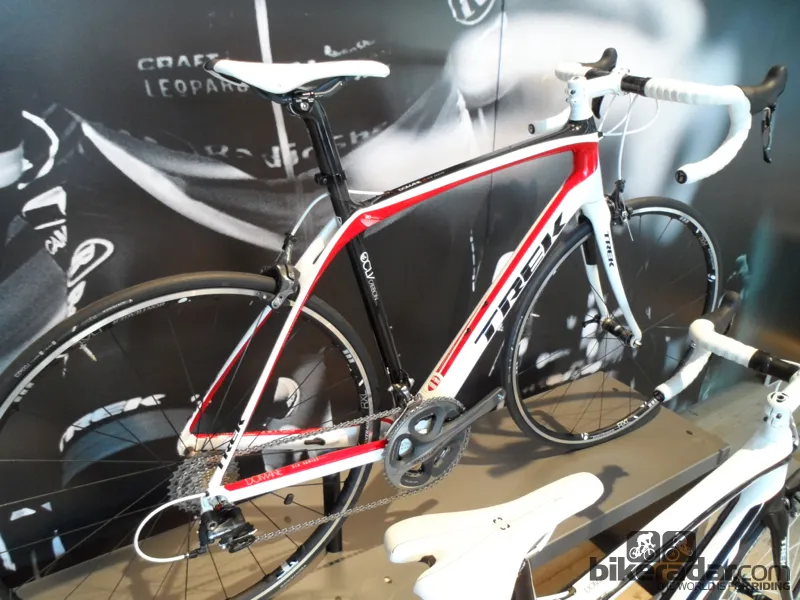
The Domane 6.9 features the forthcoming 11-speed Dura-Ace
Domane 5.9 and 5.9 WSD
At £3,700/$5,779 with a full Shimano Ultegra Di2 drivetrain and tubeless wheels, the 5.9 Domane looks like a star for 2013. We do like the murder black finish and neat Di2 integration. The 500 series carbon frame uses fully internal cable routing keeping things looking clean, a BB90 bottom bracket and DuoTrap compatibility keeping the clean lines and slick looks.
Domane 4
The Domane gets into OCLV carbon starting with the £1,500/$2,342 4.0. The clever frame is finished with a Tiagra drivetrain, aluminium Bontrager parts and wheelset. The component spec may be a little on the low side for some, but that’s offset by a frameset with a great deal of tech and if the range topping Domane we have on test a massively impressive ride too. Female riders wanting the comfort of the decoupler will have to step up to the £1,800/$2,811 4.3 model though the extra £300/$469 means an upgraded 105 drivetrain. The 4 series family tops out with the £2,100/$3,279 4.5 with significantly an Ultegra drivetrain and the new Tubeless compatibe Bontrager Race wheelset.
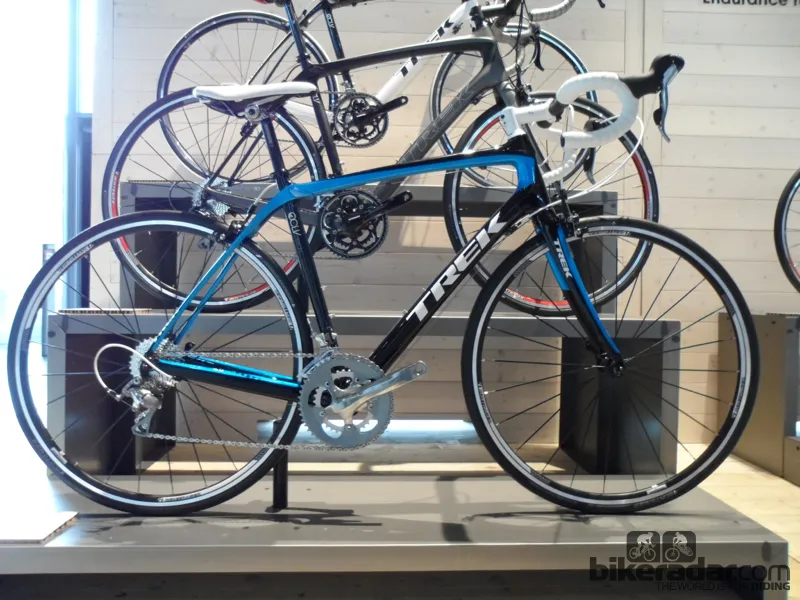
The 4.0 features a 400 series carbon frame with the new E2 headtube, BB90 bottom bracket, and that all important IsoSpeed decoupler
Domane 2.0 and 2.3
We were intrigued by the 2 series Domane. We tested the all-carbon Domane and were impressed with how active and comfortable the decoupler hindquarters are. The 2 Series uses the same system in an aluminium frame. Trek’s engineers assured us that the action and feel is the same, with just a little less travel. The base model 2.0 hits the magical £1,000/$1,561 price point with a Tiagra 10-speed drivetrain. The upgraded 2.3 gets a 105 mix and carbon seatpost for £1,200/$1,874.
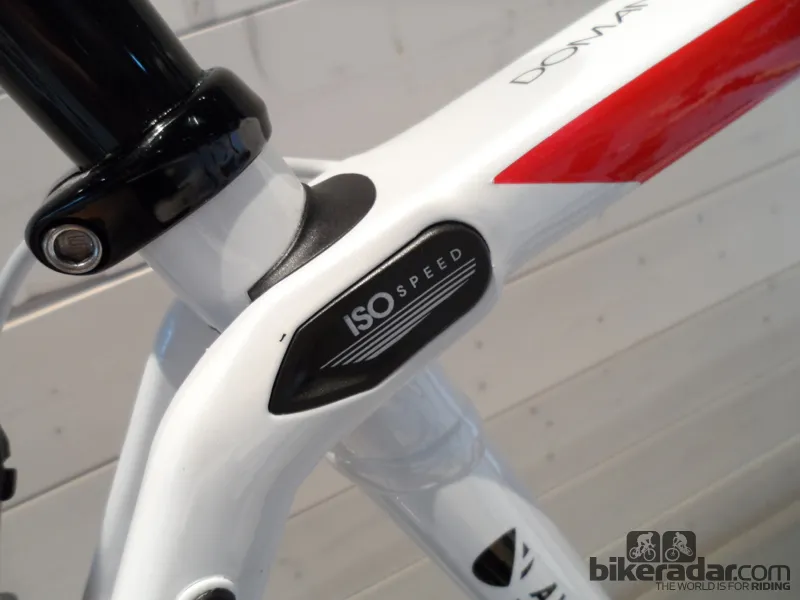
The IsoSpeed decoupler fashioned into the Aluminium 2 series Domane
